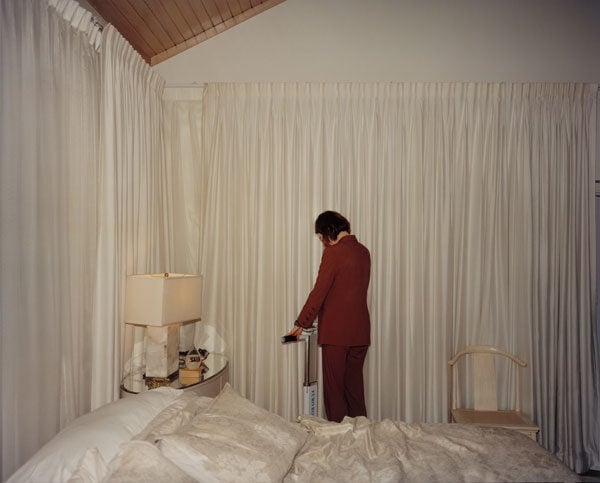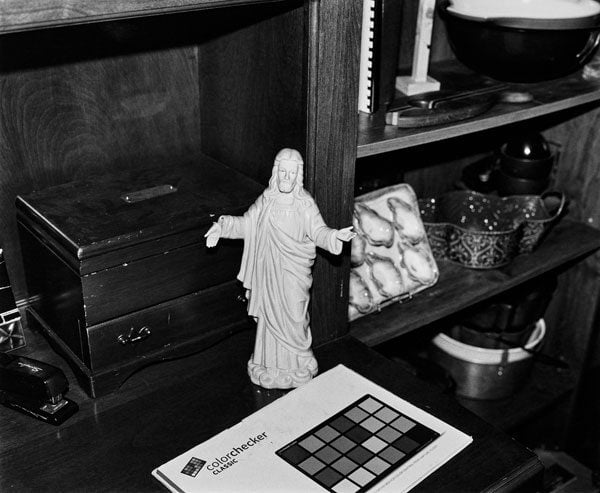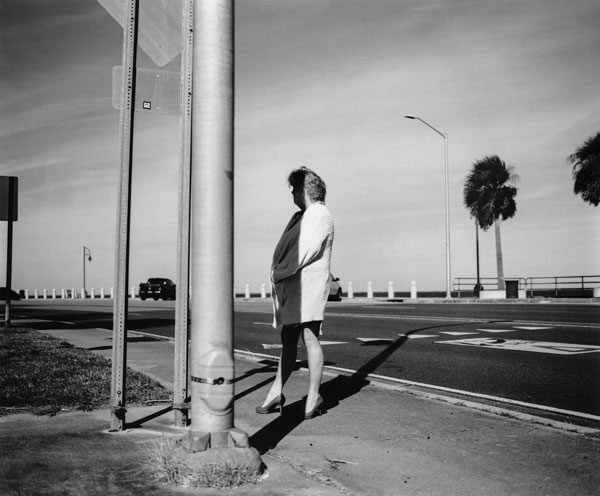Picture This

Filmmaker Yorgos Lanthimos's photos capture odd moments. (Yorgos Lanthimos / Webber Gallery)
Sometime around 2010, late in the evening, I remember popping an obscure Greek film into my DVD player that told the story of a volatile, domineering father who kept his adult children imprisoned in the family compound by terrifying them with all manner of myths. Cats, he said, were mortally dangerous. No one could go into the outside world until their dogtooth fell out. But the outside world nonetheless slips into his carefully constructed reality, and as it does, so do unpredictable spasms of sex and violence. By the time Dogtooth finished playing, I felt as if my brain had been lightly tasered. It took me a while to get to sleep.
Director Yorgos Lanthimos has since gone on to direct major Hollywood pictures such as The Lobster, The Favourite, and Poor Things — all of which have earned him Academy Award nominations. Last year, he released the feature Kinds of Kindness, which explored his frequent themes of domination and self-mortification.
What compels me about Lanthimos’s work — besides his deadpan approach to outrageous acts and casual brutality — is the singular aesthetic he builds around each of his films: the rich tapestries that infused The Favourite with a stifling air of queenly decadence, or the stuffy, outdated furnishings that gave the singles hotel in The Lobster its air of desperate melancholy. So, I was intrigued to hear that the director is also a photographer — and that his work is currently on view at Webber Gallery in downtown LA.

On the set of his 2024 film, Kinds of Kindness, Lanthimos caught Emma Stone among shimmering white fabrics. (Yorgos Lanthimos / Webber Gallery)
In the gallery, he presents a series of striking pictures taken during the filming of Poor Things and Kinds of Kindness. Some are in deeply saturated color, while others are in black and white; all were created with film, not digital cameras. Many of the images, as expected, function as a behind-the-scenes record of life on set. You see actor Mark Ruffalo, in his Poor Things mustache, sitting on a blue banquette, a pink fabric covering what appears to be his naked frame. Making many appearances is Emma Stone, who in one photo, is seen getting ready for the film’s wedding scene in a magnificent white gown with large pouf sleeves. Elsewhere, a miniaturized architectural backdrop is seen hanging from a ceiling inside a studio — an indicator of the way a movie’s reality is manufactured out of a million small illusions.
More intriguing are the series of prints he made around New Orleans during the filming of Kinds of Kindness, capturing details from the set, but in more abstract ways. A person’s shadow interrupts the drab green walls of a motel room. A stunt mannequin lies in a contorted pose on the grass. Particularly compelling is when his lens travels beyond the movie set: Here you see a woman trying to find a break from the sun in the shade of a telephone pole; there, a tabletop statue of Jesus with a broken hand.

The director is often at his most uncanny when he turns his camera to unusual corners. (Yorgos Lanthimos / Webber Gallery)
It is Lanthimos’s color photography that perhaps most closely parallels his work as a filmmaker, reflecting his deep interest in texture and color — in ways that also echo the work of the late California artist Larry Sultan, who was known for the images he made of his parents in the San Fernando Valley. (Images that made the most of shag carpet, patterned wallpaper, and glistening silk shirts.) Lanthimos shows us a shiny leather sofa that still bears the contours of the body that inhabited it. In another image, a woman in a burgundy suit stands in a room swaddled by silky, ivory drapes; she gives her back to the camera.
The director’s related book, i shall sing these songs beautifully, published by MACK last year, features additional photographs from these two series. These, likewise, can also be strange and bleakly funny — featuring a pair of feet resting daintily on a stirrup in a gynecologist’s office, or a man whose face is strategically blocked by a table umbrella.

His newer images show Lanthimos engaging street photography. (Yorgos Lanthimos / Webber Gallery)
The show is an intriguing romp, capturing Lanthimos’s evolving eye as a photographer. That eye can be uneven: some of the images rely heavily on their association with the movies to make them compelling. But Lanthimos’s world is so rich and so weird, there is still plenty to admire within his frame.
📸📸📸
Yorgos Lanthimos, Photographs, is on view at Webber Gallery through May 25th; webberrepresents.com.